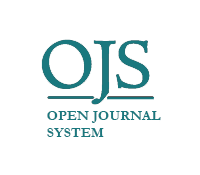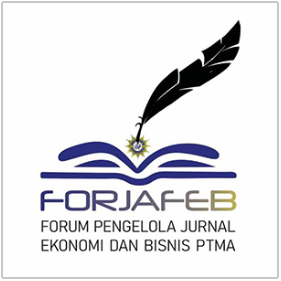Profitabilitas Bank Syariah Di Indonesia: Bagaimana Pengaruh Permodalan, Inflasi Dan Birate?
DOI:
https://doi.org/10.22219/jrak.v12i2.21931Keywords:
Cross Section SUR, Full Fledge Islamic Banking, Makroekonomi, ProfitabilitasAbstract
This study to analyze the effect of internal components of Islamic banks and macroeconomics on the profitability of Islamic banks in Indonesia. The sample used includes 8 Full Fledge Islamic banking for the period 2011Q1–2019Q4. Data analysis used panel data regression between FEM and CEM based on Chow and LM tests. Several control variables used include financing quality (NPF), bank liquidity (FDR), exchange rate and economic growth (LGDP). The robust model was chosen for further analysis and the best model was obtained, namely FEM-cross section weight (EGLS). The results found that Islamic banks are increasingly complying with sharia regulations where the BI Rate does not affect the profitability of Islamic banks. Inflation has a negative effect, while the effect of CAR has a non-linear effect on profitability. All control variables have a significant effect on the profitability of Islamic banks. NPF and exchange rate have a negative effect while EG and FDR have a positive effect on profitability. The results of the FEM constant show that there are 2 Islamic banks that excellent in profit so that they can be a reference for other Islamic banks to increase profitability.
Downloads
References
Aktaş, M., & Taylan, O. (2021). Determinants of Islamic Banks’ Profitability Using Panel Data Analysis and ANFIS Approaches in Saudi Arabia. Journal of King Abdulaziz University, Islamic Economics, 34(2), 19–40. https://doi.org/10.4197/Islec.34-2.2
Alharbi, A. . (2008). International Journal of Islamic and Middle Eastern Finance and Management. Managerial Finance, 34(10). https://doi.org/10.1108/mf.2008.00934jaa.001
Alshatti, A. (2016). Determinants of banks’ profitability − the case of Jordan. Investment Management and Financial Innovations, 13(1), 84-91. http://dx.doi.org/10.21511/imfi.13(1).2016.08
Athanasoglou, P. P., Brissimis, S. N., & Delis, M. D. (2008). Bank-specific, industry specific and macroeconomic determinants of bank profitability. Journal of International Financial Markets, Institutions and Money, 18(2), 121–136. doi:10.1016/j.intfin.2006.07.001 10.1016/j.intfin.2006.07.001
Chowdhury, M. A. . (2015). Which is more important in terms of Profitability of Islamic banks: Bank Specific factors or Macroeconomic factors? An Empirical Study on Malaysian Islamic Banks. European Journal of Islamic Finance, 2(1), 1–8. https://doi.org/10.13135/2421-2172/922
Gaber, A. (2021). Munich Personal RePEc Archive Determinants of Banking Sector Profitability: Empirical Evidence from Palestine. International Journal of Economics and Finance, 9(7), 60–68.
Gujarati, D., & Porter, C. (2008). Basic Econometrics (5th ed.). New York, NY: McGraw-Hill Education.
Kismawadi, E. R., Hamid, A., Rasydah, R., & Rafida, A. (2021). What Determines the Financial Performance of Islamic Banks in Indonesia? Share: Jurnal Ekonomi Dan Keuangan Islam, 10(2), 195. https://doi.org/10.22373/share.v10i2.9164
Kuncoro, Mudrajad. 2009. Metode Riset untuk Bisnis dan Ekonomi. Edisi 3. Penerbit Erlangga.
Kusumastuti, W. I., & Alam, A. (2019). Analysis of Impact of CAR, NPF, BOPO on Profitability of Islamic Banks (Year 2015-2017). Journal of Islamic Economic Laws, 2(1), 30–59. https://doi.org/10.23917/jisel.v2i1.6370
Masood, O., & Ashraf, M. (2012). Bank-specific and macroeconomic profitability determinants of Islamic banks: The case of different countries. Qualitative Research in Financial Markets, 4(2–3), 255–268. https://doi.org/10.1108/17554171211252565
OJK. (2019). Laporan Perkembangan Keuangan Syariah Indonesia 2019 Sinergi Dalam Membangun Ekosistem Ekonomi dan Keuangan Syariah. Otoritas Jasa Keuangan, 53(9), 18.
OJK. 2014. Peraturan Otoritas Jasa Keuangan Nomor 21/POJK.03/2014 tentang Kewajiban Penyediaan Modal Minimum Bank Umum Syariah
Porter, M.E. (2004) Competitive Advantage: Creating and Sustaining Superior Performance. Competitive Advantage Creating & Sustaining Superior Performance, 1, 94
Ramlan, H., & Adnan, M. S. (2016). The Profitability of Islamic and Conventional Bank: Case Study in Malaysia. Procedia Economics and Finance, 35(October 2015), 359–367. https://doi.org/10.1016/s2212-5671(16)00044-7
Rizvi, S. A. R., Narayan, P. K., Sakti, A., & Syarifuddin, F. (2020). Role of Islamic banks in Indonesian banking industry: an empirical exploration. Pacific Basin Finance Journal, 62(August 2018), 101117. https://doi.org/10.1016/j.pacfin.2019.02.002
Rosikah et al. (2018). Effects of Return on Asset , Return On Equity , Earning Per Share on Corporate Value. The International Journal of Engineering and Science (IJES, 7(3), 6–14. https://doi.org/10.9790/1813-0703010614
Sitompul, S., & Nasution, S. K. (2019). The Effect of Car, BOPO, NPF, and FDR on Profitability of Sharia Commercial Banks in Indonesia. Budapest International Research and Critics Institute (BIRCI-Journal) : Humanities and Social Sciences, 2(3), 234–238. https://doi.org/10.33258/birci.v2i3.412
Sukmaningrum, P. S., Pirzada, K., Rusmita, S. A., Hasib, F. F., Widiastuti, T., & Hendratmi, A. (2020). Determinants of Islamic Bank Profitability: Evidence from Indonesia. GATR Journal of Finance and Banking Review, 5(1), 1–13. https://doi.org/10.35609/jfbr.2020.5.1(1)
Tumewang, Y. K., Isnaini, R. N., & Musta’in, J. L. (2019). The impact of macro economy toward profitability of Islamic bank. Asian Journal of Islamic Management (AJIM), 1(2), 101–108. https://doi.org/10.20885/ajim.vol1.iss2.art4
Zahrah, F., Fahmi, I., & Jahroh, S. (2019). Determinants of Profitability Level of Bank Syariah in Indonesia: a Case Study At Pt. Bank Syariah Mandiri. Russian Journal of Agricultural and Socio-Economic Sciences, 85(1), 312–320. https://doi.org/10.18551/rjoas.2019-01.39
Downloads
Published
Issue
Section
License
Copyright (c) 2022 Idah Zuhroh

This work is licensed under a Creative Commons Attribution 4.0 International License.

Jurnal Reviu Akuntansi dan Keuangan is licensed under a Creative Commons Attribution-NonCommercial-ShareAlike 4.0 International License.
Authors who publish with this journal agree to the following terms:
- Authors retain copyright and grant the journal right of first publication with the work simultaneously licensed under a Creative Commons Attribution-NonCommercial-ShareAlike 4.0 International License that allows others to share the work with an acknowledgement of the work's authorship and initial publication in this journal.
- Authors are able to enter into separate, additional contractual arrangements for the non-exclusive distribution of the journal's published version of the work (e.g., post it to an institutional repository or publish it in a book), with an acknowledgement of its initial publication in this journal.
- Authors are permitted and encouraged to post their work online (e.g., in institutional repositories or on their website) prior to and during the submission process, as it can lead to productive exchanges, as well as earlier and greater citation of published work (See The Effect of Open Access).










